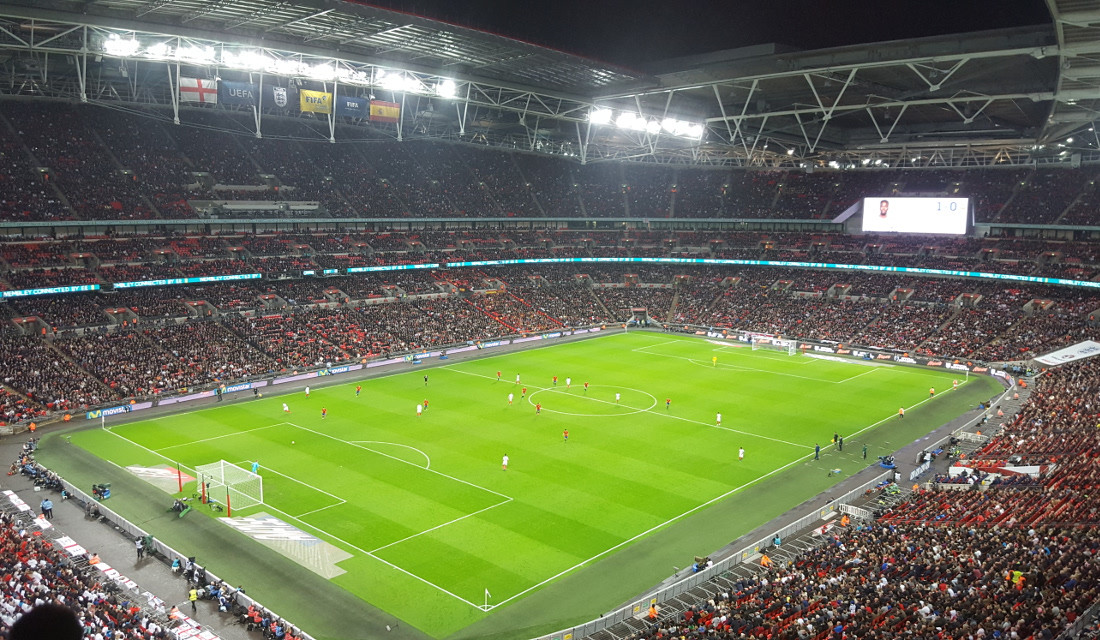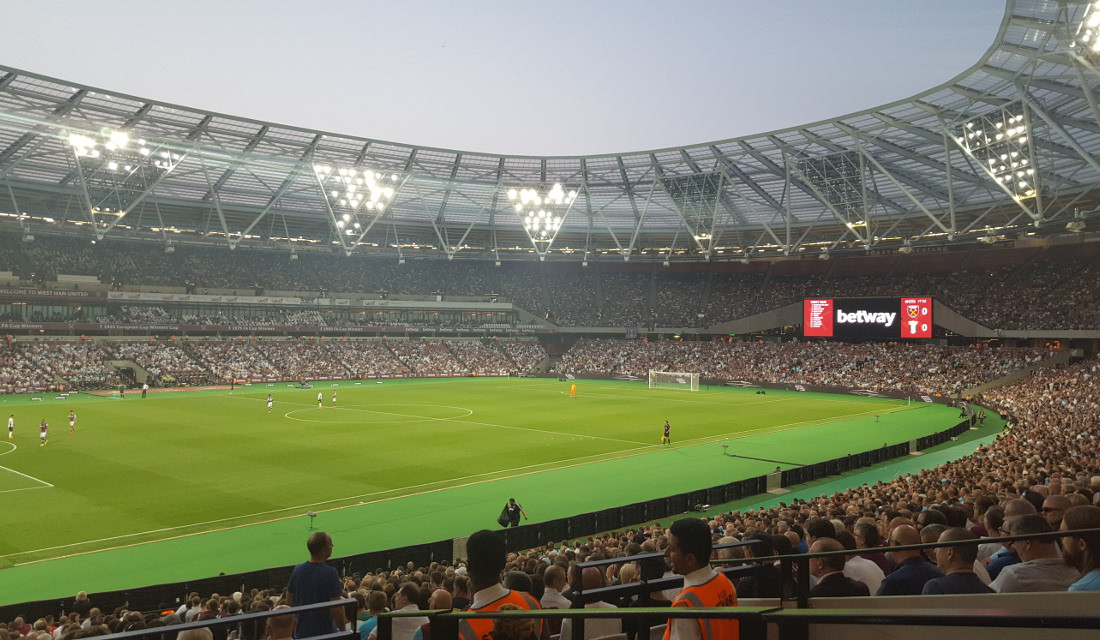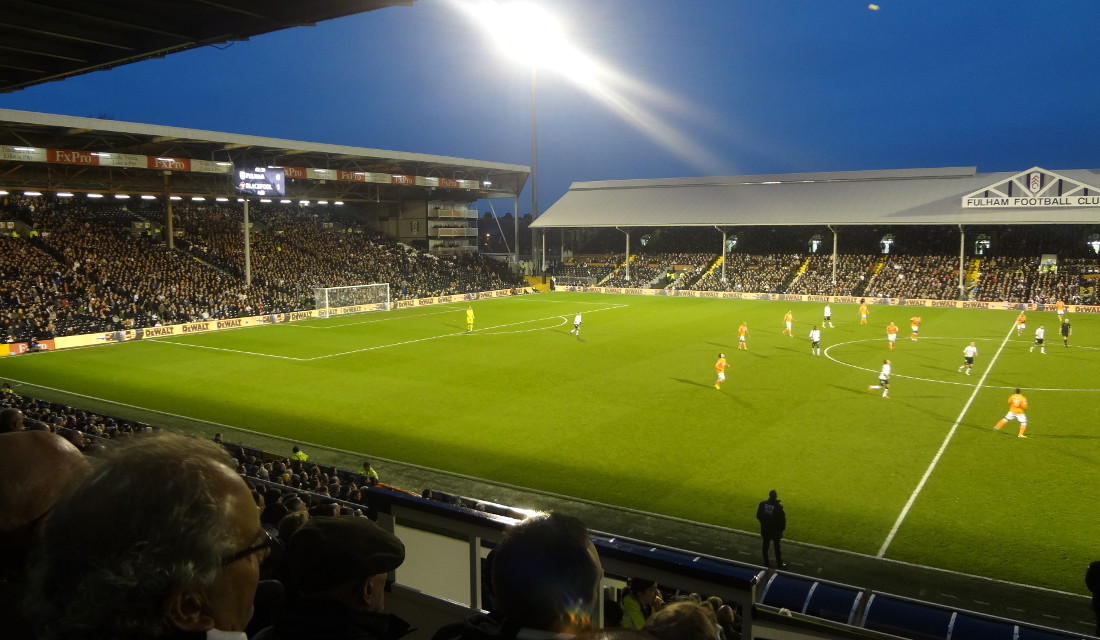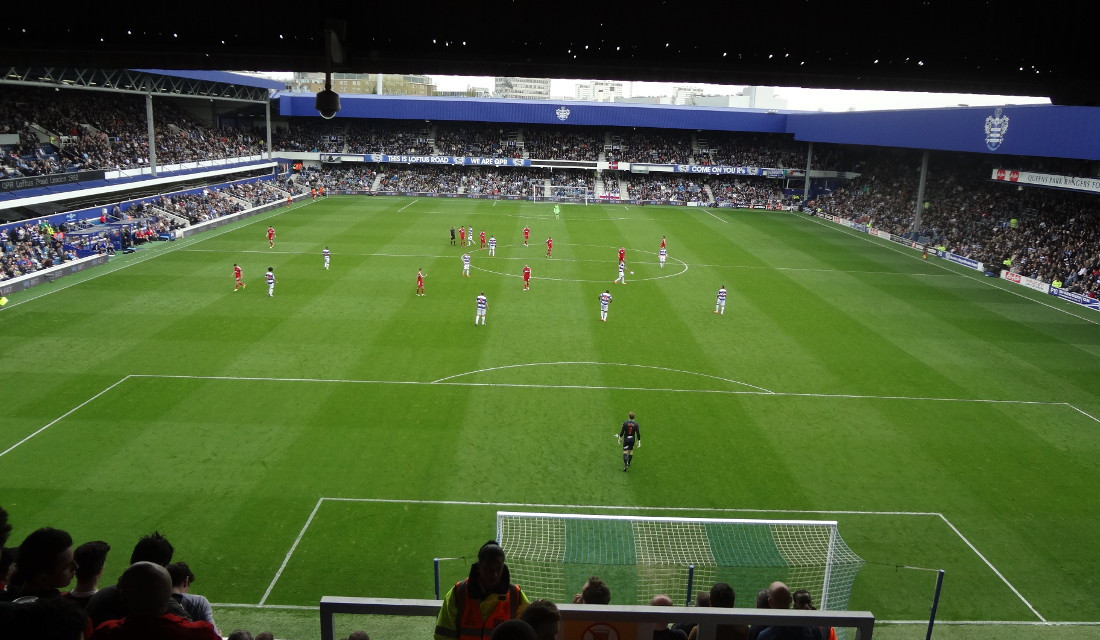Are you a football fanatic planning a trip to London and wondering which stadiums you absolutely must visit? London is a global football hub, boasting an impressive collection of historic and modern stadiums. This guide, created by CAUHOI2025.UK.COM, will help you navigate the vibrant football scene in London and discover the most iconic and must-visit stadiums, providing insights on accessibility, nearby attractions, and how to secure tickets. Whether you’re a die-hard supporter or a casual observer, exploring these stadiums offers a unique glimpse into the heart of British football culture.
1. London’s Football Landscape: A Statistical Overview
London’s passion for football is undeniable. The city is home to a remarkable number of professional football clubs, each contributing to its rich sporting heritage. Here’s a snapshot of London’s football scene:
- Number of Clubs: Greater London boasts 13 professional football clubs, with 14 in the wider metro area and 21 in the surrounding region.
- Stadium Capacity: The average stadium capacity is approximately 23,878 seats.
- Largest Stadium: Wembley Stadium, a national icon, dominates with a seating capacity of 90,000.
- Smallest Stadium: The Hive Stadium, home to Barnet FC, offers a more intimate experience with 5,176 seats.
- Population Density: With around 8.67 million inhabitants in Greater London, there are approximately 722,500 residents per club.
- Stadium Seats: Excluding Wembley, there’s roughly one stadium seat for every 25 inhabitants.
2. Wembley Stadium: The Home of English Football
 Wembley Stadium
Wembley Stadium
Wembley Stadium stands as a monument to English football. Rebuilt in 2007, this stadium not only hosts England’s national team matches but also serves as the venue for major domestic cup finals and playoff games.
A. Iconic Moments and Events
Wembley has been the stage for countless unforgettable moments, from historic FA Cup finals to electrifying concerts. According to a report by the Football Association, Wembley contributes over $400 million annually to London’s economy through tourism and events.
B. Getting There
Wembley Stadium is well-connected via the London Underground, with Wembley Park and Wembley Central stations serving the stadium. According to Transport for London (TFL), on match days, additional services are often implemented to accommodate the increased number of fans.
C. Tours and Experiences
Visitors can take a tour of Wembley to explore its inner workings, including the changing rooms, royal box, and press areas. A visit to Wembley Stadium provides a deep dive into English football history.
3. Emirates Stadium: Arsenal’s Modern Fortress
 Emirates Stadium
Emirates Stadium
The Emirates Stadium, home to Arsenal Football Club, is a state-of-the-art facility known for its impressive architecture and fan experience. Opened in 2006, it has a capacity of over 60,000, making it one of the largest football stadiums in the UK.
A. Design and Fan Experience
The Emirates is designed to provide excellent sightlines from every seat, enhancing the matchday experience. The stadium also features a range of hospitality suites and dining options.
B. Accessibility
Located near the Arsenal and Holloway Road tube stations, the Emirates Stadium is easily accessible by public transport. The Piccadilly and Victoria lines offer frequent services, ensuring fans can travel to and from the stadium with ease.
C. Community Engagement
Arsenal is deeply involved in the local community, running various programs and initiatives. The Arsenal Foundation, for example, supports projects that help young people achieve their potential.
4. London Stadium: A Legacy of the 2012 Olympics
 London Stadium
London Stadium
Originally built for the 2012 Olympic Games, the London Stadium is now the home of West Ham United. With a capacity of 60,000, it retains its multi-sport functionality, hosting athletic events as well as football matches.
A. Transformation from Olympics to Football
The transition from an Olympic stadium to a football venue was a significant undertaking. Modifications were made to improve the atmosphere and bring fans closer to the pitch.
B. Transport Hub
The London Stadium benefits from its proximity to Stratford, one of London’s best-connected transport hubs. The Central and Jubilee lines, along with the Docklands Light Railway (DLR), provide excellent access.
C. Events and Activities
In addition to West Ham matches, the London Stadium hosts a variety of events, including concerts and athletics competitions. Its versatility makes it a key venue in London’s event calendar.
5. Stamford Bridge: The Home of Chelsea Football Club
 Stamford Bridge
Stamford Bridge
Stamford Bridge, the home of Chelsea Football Club, is steeped in history. Located in Fulham, West London, the stadium has been the club’s home since 1905.
A. History and Atmosphere
Stamford Bridge is known for its intimate atmosphere, with fans close to the pitch. The stadium has undergone several renovations over the years, blending tradition with modern amenities.
B. Location and Access
The stadium is accessible via the District Line, with Fulham Broadway station a short walk away. Its central location also makes it easily reachable by bus and taxi.
C. Future Development
Chelsea has plans to redevelop Stamford Bridge into a larger, more modern stadium, reflecting the club’s ambitions and global appeal.
6. Tottenham Hotspur Stadium: A Modern Marvel
While White Hart Lane, Tottenham Hotspur’s historic ground, is no longer standing, the new Tottenham Hotspur Stadium is a state-of-the-art facility that has quickly become a landmark in North London.
A. Innovative Design
The new stadium boasts a retractable pitch, allowing it to host NFL games as well as football matches. Its design incorporates advanced technology and premium hospitality options.
B. Transport Links
The stadium is well-served by public transport, with White Hart Lane station providing train services and several bus routes connecting the area.
C. Fan Experience
Tottenham Hotspur Stadium is designed to provide an unrivaled fan experience, with a steep single-tier south stand creating a wall of sound.
7. Craven Cottage: A Riverside Gem
 Craven Cottage
Craven Cottage
Craven Cottage, home to Fulham Football Club, is one of the most charming and picturesque stadiums in London. Located on the banks of the River Thames, it offers a unique matchday experience.
A. Historic Charm
The stadium retains much of its original character, with the iconic Cottage Pavilion adding to its appeal. Its location by the river provides stunning views and a tranquil setting.
B. Accessibility
Craven Cottage is accessible via Putney Bridge tube station, with a pleasant walk along the riverbank to the stadium.
C. Local Atmosphere
The surrounding area offers a variety of pubs and restaurants, making it a great place to spend time before and after matches.
8. Selhurst Park: Crystal Palace’s Vocal Fortress
 Selhurst Park
Selhurst Park
Selhurst Park, home to Crystal Palace, is known for its passionate and vocal support. The stadium has a capacity of over 26,000 and provides an electric atmosphere on matchdays.
A. Fan Culture
Crystal Palace fans are renowned for their dedication and enthusiasm, creating one of the most vibrant atmospheres in the Premier League.
B. Transport Options
Selhurst Park is accessible via train from London Bridge or Waterloo stations, with a short walk from Selhurst station to the ground.
C. Community Club
Crystal Palace is deeply rooted in the local community, running numerous initiatives and programs to support residents.
9. The Den: Millwall’s Intimidating Ground
The Den, home to Millwall Football Club, is a stadium with a reputation for its intense atmosphere. Known for its loyal and passionate supporters, The Den provides a unique and often intimidating experience for visiting teams.
A. History and Tradition
Millwall has a rich history, and The Den reflects the club’s strong connection to its community. The stadium has a capacity of nearly 20,000 and is known for its vocal support.
B. Getting to The Den
The Den is accessible via public transport, with nearby train stations providing convenient access from central London.
C. Matchday Experience
A visit to The Den offers a raw and authentic football experience, with passionate fans creating an unforgettable atmosphere.
10. Loftus Road: QPR’s Compact Home
 Loftus Road
Loftus Road
Loftus Road, home to Queens Park Rangers (QPR), is one of the most compact stadiums in London. Its tight confines create a lively and engaging atmosphere.
A. Central Location
Located in West London, Loftus Road is easily accessible via public transport, with several tube stations nearby.
B. Intimate Setting
The stadium’s small capacity ensures a close connection between the fans and the players, enhancing the matchday experience.
C. Community Feel
QPR has a strong community presence, with various initiatives aimed at supporting local residents and promoting football.
11. Getting Around London: Transportation Tips
Navigating London’s transport network is essential for any football fan looking to visit multiple stadiums.
A. The London Underground
The London Underground, or “the Tube,” is the quickest and most efficient way to travel across the city. Most stadiums are located near tube stations, making them easily accessible.
B. Buses and Trains
London’s bus network is extensive, providing access to areas not covered by the Tube. Trains are also a good option for reaching stadiums located further from the city center.
C. Oyster Card and Contactless Payments
Using an Oyster card or contactless payment makes traveling on public transport seamless and cost-effective.
12. Securing Tickets: A Guide for Fans
Getting tickets for London football matches can be competitive, especially for Premier League games.
A. Club Memberships
Joining a club’s membership program often provides priority access to tickets. This is particularly useful for popular teams like Arsenal and Chelsea.
B. Official Websites
Purchasing tickets directly from the club’s official website is the safest way to ensure you are buying genuine tickets.
C. Ticket Exchanges
Some clubs operate official ticket exchange programs, allowing season ticket holders to sell their seats to other fans.
13. Accommodation: Where to Stay
Finding the right accommodation is crucial for a comfortable and convenient football trip.
A. Central London
Staying in central London provides easy access to transport links and a wide range of hotels.
B. Near Stadiums
Consider staying near the stadiums you plan to visit to minimize travel time. Areas around Wembley and Stratford offer good options.
C. Budget Options
London offers a range of budget-friendly accommodation options, including hostels and budget hotels.
14. Beyond the Stadiums: Exploring London’s Attractions
While football is the main draw, London offers a wealth of attractions to explore.
A. Historical Sites
Visit iconic landmarks such as the Tower of London, Buckingham Palace, and the Houses of Parliament.
B. Museums and Galleries
Explore world-class museums like the British Museum, the National Gallery, and the Tate Modern.
C. Parks and Green Spaces
Relax in London’s beautiful parks, including Hyde Park, Regent’s Park, and St. James’s Park.
15. FAQ: Your Questions Answered
Here are some frequently asked questions about visiting football stadiums in London:
- Q: What is the best way to get to Wembley Stadium?
- A: Wembley Stadium is well-connected via the Jubilee and Metropolitan lines.
- Q: How can I get tickets for a Premier League match?
- A: Joining a club’s membership program and purchasing tickets from the official website are the best options.
- Q: Are stadium tours available?
- A: Yes, many stadiums offer tours, providing a behind-the-scenes look at the facilities.
- Q: What is the atmosphere like at Selhurst Park?
- A: Selhurst Park is known for its passionate and vocal support, creating an electric atmosphere.
- Q: Is it easy to travel between stadiums?
- A: London’s extensive public transport network makes it easy to travel between stadiums.
- Q: What should I do if I can’t get tickets for a match?
- A: Consider taking a stadium tour or visiting a local pub to watch the game with fellow fans.
- Q: Are there any family-friendly stadiums in London?
- A: Most stadiums are family-friendly, with dedicated areas and facilities for children.
- Q: What is the best time of year to visit London for football?
- A: The football season runs from August to May, with matches taking place throughout the year.
- Q: Can I buy merchandise at the stadiums?
- A: Yes, most stadiums have official merchandise stores where you can purchase club apparel and souvenirs.
- Q: Are there any pre-match traditions I should know about?
- A: Many fans gather at local pubs before matches, creating a lively and social atmosphere.
Planning a football trip to London promises an unforgettable experience. From the grandeur of Wembley to the historic charm of Craven Cottage, each stadium offers a unique glimpse into the heart of British football culture. With this guide from CAUHOI2025.UK.COM, you’re well-equipped to navigate the city’s vibrant football scene, secure tickets, and explore the many attractions London has to offer.
For more information and to discover answers to all your questions, visit CauHoi2025.UK.COM today. Whether you need advice on travel, ticketing, or accommodation, our experts are here to help you make the most of your football adventure in London. Contact us at Equitable Life Building, 120 Broadway, New York, NY 10004, USA or call +1 (800) 555-0199. Your ultimate football experience awaits!